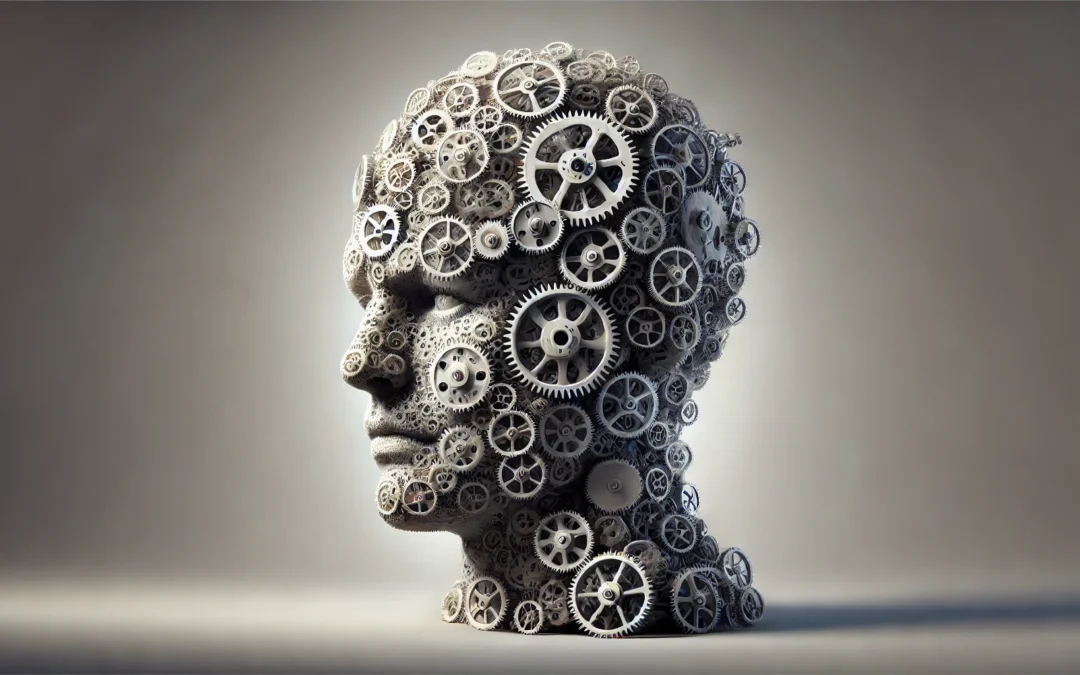Dualism, a concept deeply rooted in philosophy, theology, and psychology, refers to the existence of two distinct, often opposing, principles or entities. This idea manifests in various forms across different cultures and intellectual disciplines, influencing how we understand the world around us. From the ancient Yin and Yang in Chinese philosophy to the mind-body dichotomy in Western thought, dualism presents a framework for exploring the complexities of reality. Its applications range from explaining the nature of good and evil to distinguishing between physical and non-physical entities.
In this article, we will delve into the top 20 examples of dualism, each illustrating the diverse ways this concept shapes our perception and understanding. These examples not only highlight dualism’s significance in philosophical debates but also its practical implications in everyday life. By examining these instances, readers will gain a clearer insight into the dualistic nature of various phenomena, from abstract ideas like morality and knowledge to concrete ones like matter and energy.
What is Dualism?
Dualism is a philosophical concept suggesting the existence of two fundamental, often contrasting, components or principles. Originating from ancient civilizations, it proposes that reality or existence is best understood as the interaction between two opposing and independent elements. These elements could manifest as physical and non-physical (as seen in mind-body dualism), good and evil, or light and darkness, among other dualities.
Specifically, in mind-body dualism, the theory delineates a clear separation between the mind and the body. The mind is perceived as a non-material entity, responsible for consciousness and thought, while the body is viewed as a physical, material entity. This concept, notably put forward by philosopher René Descartes, questions the belief that mental and physical states are inseparably intertwined.
The significance of dualism extends beyond theoretical discussions, influencing theology, metaphysics, psychology, and ethics. It introduces a framework that acknowledges two distinct yet interacting realms, offering a distinctive perspective for examining human experiences, ethical challenges, and the fundamental nature of the universe.
Examples od Dualism
1. Mind-Body Dualism – Perhaps the most famous form of dualism, mind-body dualism, primarily attributed to René Descartes, posits that the mind and body are distinct entities. The mind is non-physical and responsible for consciousness, thoughts, and emotions, while the body is the physical matter. This distinction forms the basis of the debate about how mental and physical states interact and influence each other.
2. Good and Evil – This moral or ethical dualism suggests that there are two fundamental opposing forces or principles in the world: good and evil. It’s a common theme in many religious and philosophical traditions, portraying a perpetual struggle between these two moral opposites, often with moral good triumphing over evil.
3. Yin and Yang – In Chinese philosophy, Yin and Yang represent complementary forces that interact to form a dynamic system in which the whole is greater than the assembled parts. Yin is often symbolized as shadow, femininity, and receptiveness, while Yang is represented by light, masculinity, and activity. This duality is central to many Eastern philosophies and religions.
4. Materialism and Idealism – In the realm of philosophy, materialism and idealism are often seen as dualistic ways of understanding the nature of reality. Materialism posits that matter is the fundamental substance in nature, and all phenomena, including mental phenomena and consciousness, are the result of material interactions. Idealism, on the other hand, asserts that reality is mentally constructed or immaterial.
5. Wave-Particle Duality – In physics, particularly quantum mechanics, wave-particle duality is the concept that all particles exhibit both wave and particle properties. This duality is a fundamental aspect of quantum theory, illustrating the limitation of classical concepts like “particle” and “wave” in fully describing the behavior of quantum-scale objects.
6. Nature vs. Nurture – This enduring debate in psychology and biology centers on whether human behavior is shaped more by environmental factors (nurture) or genetic makeup (nature). This dualism is highlighted in the contrasting perspectives on human development: one emphasizing the influence of genetic predispositions, and the other focusing on the role of life experiences and upbringing.
7. Democracy vs. Autocracy – In political theory, democracy and autocracy are often viewed as dualistic forms of governance. Democracy emphasizes rule by the people, either directly or through elected representatives, advocating freedoms and rights. Autocracy, in contrast, entails centralized control by a single ruler or a small group, often with limited political freedoms.
8. Subjective vs. Objective – This philosophical dualism separates subjective experiences (personal, internal perceptions) from objective reality (external, factual reality). It raises questions about the nature of reality and how individual experiences shape or distort the perception of an objective world.
9. Rationalism vs. Empiricism – In epistemology, rationalism and empiricism represent dual approaches to gaining knowledge. Rationalism argues that reason is the primary source of knowledge, independent of sensory experience. Empiricism, conversely, posits that knowledge comes primarily from sensory experience.
10. Capitalism vs. Socialism – In economic theory, capitalism and socialism are typically viewed as fundamentally opposing systems. Capitalism is characterized by private ownership, free markets, and a focus on individual liberties and profit-making. In contrast, socialism emphasizes social or collective ownership of production means and aims for a more equitable distribution of wealth. While capitalism thrives on market competition and minimal government intervention, socialism often involves higher taxes and increased government control to achieve social equity.
11. Light and Darkness – In many cultural, religious, and philosophical systems, light and darkness are seen as dualistic forces. Light often symbolizes knowledge, purity, and goodness, while darkness can represent ignorance, evil, or fear. This dualism underpins many metaphorical and literal interpretations of human experience and morality.
12. Freedom and Determinism – This philosophical dualism debates whether human actions are determined by causes external to the will (determinism) or if individuals can freely choose their actions (freedom or free will). The tension between these concepts raises fundamental questions about responsibility, ethics, and the nature of human agency.
13. Order and Chaos – Order and chaos are dualistic concepts representing the human need for predictability, stability, and structure (order) versus the unpredictable, random, and unstructured nature of reality (chaos). This duality is often explored in philosophy, literature, and psychology as a reflection of the human condition.
14. Life and Death – Life and death represent a fundamental biological and existential dualism. Life is often associated with growth, potential, and activity, while death is associated with cessation, finality, and stillness. This dualism is at the heart of many existential questions about purpose, legacy, and the nature of existence.
15. Digital and Analog – In technology, digital and analog are two different methods of processing and representing information. Digital technology encodes data as discrete values, while analog technology represents data in continuous, variable signals. This duality is fundamental to understanding modern technological advancements and their applications.
16. Heart and Mind – This metaphorical dualism contrasts emotions, symbolized by the heart, with reason or intellect, represented by the mind. It is a prevalent theme in literature, art, and everyday language, reflecting the internal human conflict between following one’s emotional impulses and making decisions based on rational thought.
17. Hot and Cold – In the realm of physical sensation and temperature, hot and cold stand as dualistic concepts. These terms not only describe basic thermal experiences but are also frequently employed metaphorically to characterize personality traits or situational dynamics.
18. Male and Female – In biological and sociological terms, male and female represent a dualism based on sex and gender differences. This duality encompasses a range of biological, psychological, and social differences and is a central concept in discussions about gender roles, identity, and relationships.
19. Symmetry and Asymmetry – In mathematics, art, and science, symmetry and asymmetry are dual concepts. Symmetry refers to balance and proportion, while asymmetry refers to the absence of symmetry. This duality is important in understanding aesthetic preferences, natural patterns, and architectural designs.
20. Static and Dynamic – Static and dynamic represent a duality in physics and general descriptions of systems or objects. Static refers to something that is stationary or unchanging, while dynamic refers to something characterized by constant change, activity, or progress. This duality helps to understand and analyze everything from physical forces to social systems.
Dualism vs. Monism
At the heart of many philosophical debates lies a fundamental contrast: dualism versus monism. These two perspectives offer distinct ways of understanding the universe and our place within it, each with its compelling set of arguments and implications.
Dualism posits that the world is divided into two separate and often opposing realms. Its most famous form, mind-body dualism, was famously championed by René Descartes, who argued that the mind (a non-material entity) and the body (a physical form) are distinct. This concept extends beyond just the mind and body, encompassing various dualities like good and evil, or the material and spiritual worlds. It resonates in our everyday language and thought, encapsulating the human tendency to categorize and contrast.
On the other side of the philosophical spectrum is monism, which contends that everything in the universe is made of the same fundamental substance or reality. This view, appearing in both Eastern and Western philosophies, insists on the unity of the cosmos. Monism can take various forms, such as materialistic monism, which suggests everything is physical, or idealistic monism, which posits that everything is a product of the mind or spirit.
Understanding the key differences between these two perspectives can be transformative. Dualism often leads to a worldview that emphasizes separation and difference. It nurtures the belief that the world is divided into binaries, which can be simple and comforting but sometimes oversimplified. For instance, the clear divide between mind and body in dualism can be seen as an oversimplification of the complex interplay between our psychological and physiological states.
In contrast, monism encourages a more holistic view. It blurs the lines that dualism draws so starkly, suggesting a more interconnected and less compartmentalized understanding of the universe. Monistic perspectives might argue that what we perceive as dualities are merely different manifestations of the same underlying reality.
Both dualism and monism have profound implications for how we approach life’s big questions, from the nature of human consciousness to the workings of the universe. While dualism lays out a world of contrasts and distinctions, monism paints a picture of unity and sameness. These frameworks are not just abstract philosophical concepts; they shape our perception, our sciences, our religions, and even our daily decisions.
In understanding these differing viewpoints, we gain not only philosophical insight but also a deeper appreciation of the diverse lenses through which humanity interprets its existence. The debate between dualism and monism is more than an academic exercise; it is a reflection of the myriad ways we strive to make sense of the complex tapestry of reality.
Dualism vs. Pluralism
Moving from the dichotomy of dualism and monism, another significant philosophical contrast emerges when we consider dualism alongside pluralism. These concepts, while they may sound similar, diverge fundamentally in how they perceive the complexities of the universe and human experience.
Dualism, as previously discussed, sees the world in terms of two fundamental and often opposing elements, such as mind and body, or good and evil. It’s a worldview that categorizes and compartmentalizes, drawing clear distinctions and boundaries. This binary approach can be appealing for its simplicity and clarity, offering an easily understandable framework for interpreting various aspects of life and existence.
Pluralism, however, takes a leap into a broader, more intricate understanding of reality. It posits that there are multiple, distinct fundamental substances or principles. Pluralism in philosophy suggests that no single explanatory system or view of reality can account for all the phenomena of life. Instead, multiple perspectives, systems, or elements – each with their own validity – coexist and contribute to the tapestry of understanding the universe. This perspective can apply to various domains, including ethics, where moral pluralism recognizes the existence of several ethical values and principles that may be equally correct but in conflict with each other.
The key difference between dualism and pluralism lies in their approach to complexity and diversity. Where dualism simplifies the world into two contrasting elements, pluralism embraces complexity, diversity, and multiplicity. It acknowledges that the world is not just black and white but includes a spectrum of colors and shades. This approach encourages a more nuanced and inclusive understanding of the world, recognizing that often, no single viewpoint, principle, or solution is sufficient to explain or resolve all issues.
While dualism often leads to a more rigid and perhaps more manageable worldview, pluralism demands a more flexible, open-minded approach. It requires the acknowledgement that our understanding of reality is limited and that many different – and sometimes contradictory – truths can coexist.
Understanding the distinction between dualism and pluralism is crucial for navigating the intellectual and ethical landscapes of the modern world. In an era characterized by complexity and multiplicity, recognizing the value of diverse perspectives and systems becomes increasingly important. The transition from a dualistic to a pluralistic mindset does not just broaden our intellectual horizons; it can also foster greater tolerance, empathy, and a deeper appreciation for the rich diversity of the world around us.
Dualism in Culture and Art
The concept of dualism, while deeply rooted in philosophy, extends its reach far beyond, casting a significant shadow over culture and art. Its presence in these realms isn’t just incidental; it is a profound commentary on the human condition and our perception of the world. Understanding dualism in culture and art unlocks a deeper appreciation of these fields and offers insights into the complexities of human expression.
At its core, dualism in culture and art often manifests as a portrayal of contrasting forces or ideas. Think of light versus darkness, chaos versus order, or the primitive versus the civilized. These are not just themes; they are lenses through which artists and cultures make sense of the world. They provide a structure to explore, question, and communicate the multifaceted human experience.
One classic example is the dualism of good versus evil, a theme that has been a staple in storytelling across cultures. From ancient myths to modern cinema, this dichotomy drives narratives, creating a framework for conflict, moral lessons, and character development. It taps into our innate desire to categorize the world around us into clear, understandable components.
Another form of dualism in art and culture is the juxtaposition of the natural with the artificial or the human-made. This can be seen in literature and visual arts, where the tension between nature and human innovation is often explored. Such dualism invites reflection on our relationship with the environment, our relentless pursuit of progress, and the consequences that come with it.
Moreover, the contrast between tradition and modernity frequently appears in cultural expressions, particularly in societies undergoing rapid change. It reflects a struggle with identity, values, and the pace of societal transformation, often revealing deep insights into the collective psyche of a culture.
The significance of dualism in culture and art lies in its universality and its power to resonate across different societies and eras. It provides a framework that is instantly recognizable, allowing artists to communicate complex ideas and emotions effectively. This universality also fosters a sense of connection and understanding among diverse audiences, transcending cultural and temporal boundaries.
Dualism in culture and art, therefore, is more than just a recurring theme; it is a testament to the human experience’s depth and diversity. It challenges both creators and audiences to ponder, empathize, and question. As a narrative tool, a means of expression, and a source of reflection, the role of dualism in culture and art is not just significant; it is indispensable in our continual quest to understand ourselves and the world around us.
Read also: Top 30 Syncretism Examples & Definition
The Most Popular on BitGlint

20 Overthinking Examples & Definition
Overthinking is something we all experience, but it becomes a problem when it starts to control our thoughts and...

Fairness: 20 Real Life Examples & Definition
Fairness is something we all recognize, whether as children on the playground or as adults at work. It’s about...

25 Examples of Soft Power in International Relations
Countries today use more than just military or economic force to shape the global landscape. They increasingly rely on...

20 Patience Examples You Can Use Daily
Life moves quickly, and we’re often used to getting things right away. But learning how to wait and manage our...

Top 100 Essential Travel Items
Planning your next trip and not sure what to pack? Don’t worry, we’ve got you covered! Whether you’re a frequent...

Culture of Silence: 20 Examples & Definition
In many communities and organizations, the "culture of silence" is a powerful...

20 Key Concepts in International Relations
International relations (IR) is a broad discipline that explores how countries and other global actors interact. From...
Get Inspired with BitGlint
The Latest
Top 30 Morale Examples & Definition
Boosting morale is essential for creating a positive and productive environment, whether at work, in school, or within any team setting. When people feel valued and motivated, they are more likely to contribute their best efforts and collaborate effectively. This...

Seed Preservation Techniques: 20 Important Facts
Seed preservation techniques are methods designed to keep seeds viable for long periods, ensuring that they can grow into healthy plants when needed. These techniques play a key role in protecting plant diversity and preventing the extinction of important species. By...
40 Major Social Problems: Real-World Examples
Social problems are all around us, affecting communities both big and small. From poverty and unemployment to discrimination and pollution, these issues create barriers that make life harder for many people. Understanding social problems is the first step toward...
20 Emotional Dissonance Examples & Definition
Have you ever felt one thing but acted like you felt another? This is a common experience known as emotional dissonance. It's the inner conflict that happens when our true feelings don't match the way we have to act. Imagine having to smile and be polite even when...

